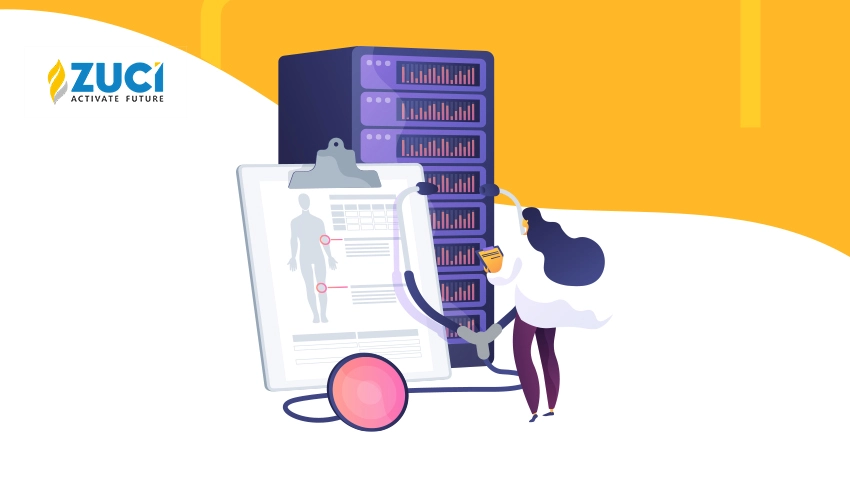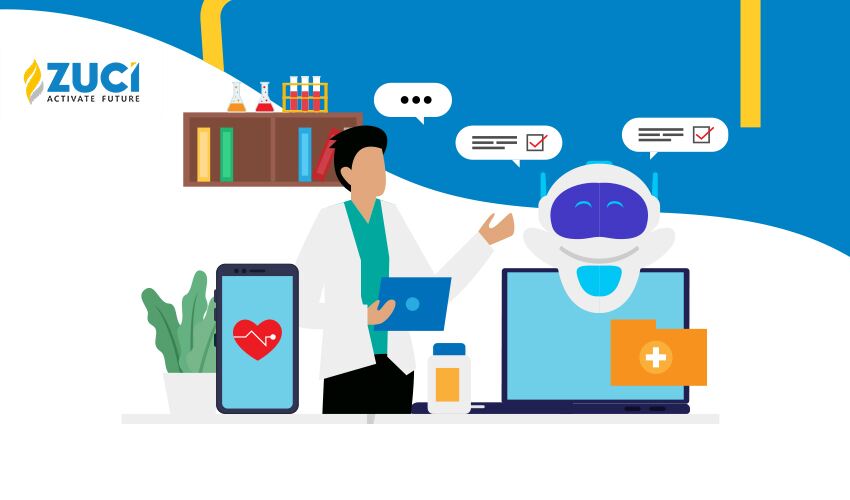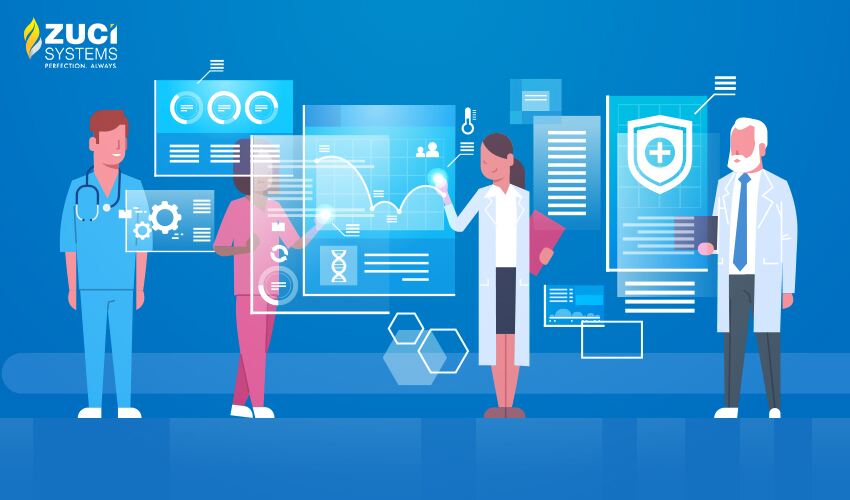Reading Time : 1 Mins
Fundamentals Of Software Testing
An INFJ personality wielding brevity in speech and writing.
What Is Software Testing?

We often hear such news occurring with alarming frequency around the world.
But why do they happen?
What can we do to prevent such tragedies?
There is a common answer to all these issues: software testing!
Yes! And that is because all these tragedies could have been avoided by a process of rigorous software testing.
Simply put, software testing is the investigation of the properties of a software system to determine its feasibility for a given task or purpose. Software testing checks to ascertain whether the software functions the way it is expected to function, under a wide variety of different circumstances.
As the purpose of different software systems is wide and varied, so also the types of testing vary accordingly. In fact, there are more than 150 types of software testing, and more are being added regularly, to keep pace with the advances being made in leaps and bounds in the domain of software technology. Naturally, not all tests apply to all software products or services. Each test is carefully crafted according to the exact requirements of the application being tested.
Definition of Software Testing
|
The Need for Software Testing
Generally speaking, software testing aims to identify errors and deficiencies in software systems with respect to the expected requirements. All of the disasters that we mentioned occurred because the tests that were conducted on them failed to spot the defects or ‘bugs’ in them. Thus, one of the characteristics of good software testing is its ability to identify defects.
The achievement of 100% accuracy or zero-defects is the holy grail of software testing. However, this is easier said than done. One of the primary weapons in the software testers arsenal is the development of test cases. Test cases are written with the aim of maximizing test coverage—in other words, conducting tests under as many different situations as possible.
Considering the serious consequences of software defects, the efforts spent in maximizing test coverage are well worth the effort. Other important reasons for extensive software testing are:
- Better security
Certain applications such as banking, defence, and other critical applications need to meet a higher degree of security requirements than most other software.
- Quality improvement
All applications aim to improve quality to ensure superior functionality.
- Cost optimization
Testing can also improve cost-effectiveness by optimizing the performance of applications.
- Customer delight
Another major consideration in software testing is to exceed customers’ expectations by delivering a product that end-users love to use.
Fundamentals of Software Testing
Testing Levels:
-
- Unit Testing: Testing individual components or units of code in isolation.
- Integration Testing: Verifying the interactions between different units/modules.
- System Testing: Testing the entire software application as a complete system.
- Acceptance Testing: Confirming that the software meets user requirements and is ready for deployment.
Testing Types:
-
- Functional Testing: Validating that the software functions correctly according to specifications.
- Non-Functional Testing: Assessing aspects like performance, security, usability, etc.
- Manual Testing: Test cases executed manually by testers.
- Automated Testing: Using scripts/tools to automate test case execution.
- Regression Testing: Re-testing to ensure that new changes haven’t introduced defects.
- Smoke Testing: Initial tests to check if the basic functionalities work after changes.
- Exploratory Testing: Unscripted testing to explore the software and discover defects
Learn more about types of software testing here
Test Cases and Test Suites:
-
- Test Case: A specific set of conditions and inputs to verify a particular aspect of the software.
- Test Suite: A collection of test cases grouped together for efficient execution.
Read more on: How To Write Test Cases & what are its main components
Defect Reporting and Tracking:
-
- Defect: A discrepancy between expected and actual software behavior.
- Bug Report: Documenting defects with detailed information to help developers understand and fix them.
- Defect Tracking: Managing and monitoring the progress of defect resolution.
Read more on: Downside of not having a formal defect analysis feedback system
Test Environment:
A test environment refers to a setup or configuration in which software or hardware is tested to ensure its functionality, performance, and compatibility before it is deployed in a production environment or released to users. Test environments are designed to mimic the conditions of the production environment as closely as possible, allowing testers to identify and resolve issues or bugs before the product goes live. Test environments can vary in complexity depending on the nature of the software or system being tested, and they may include various tools, databases, networks, and configurations to simulate real-world usage scenarios.
Check out: What Is a Test Environment? A Guide to Managing Your Testing
Test Documentation:
-
- Test Plan: A comprehensive document outlining testing objectives, scope, resources, and schedule.
- Test Strategy: Describes the overall approach to testing.
- Test Cases/Scripts: Detailed steps to execute specific tests.
- Test Reports: Summarize test execution results and defects.
Testing Techniques:
-
- Black Box Testing: Focusing on external behavior without knowledge of internal code.
- White Box Testing: Examining internal logic, code, and structures.
- Grey Box Testing: Combining elements of both black and white box testing.
Test Automation:
-
- In test automation, testers or developers typically write scripts or use recording tools to create automated test cases. These test cases can then be executed automatically, freeing up human testers from repetitive manual testing tasks. Test automation can cover a wide range of testing types, including functional testing, regression testing, performance testing, and more.
Check out your complete guide to test automation 👉
Read on:
📌Building a scalable test automation framework for your project
📌Tips from SMEs to help you pick automation testing tools
📌An overview of test automation report analysis
📌Best Practices of Test Maintenance in Software Testing
📌Measuring the effectiveness of Test Automation
📌4 Test Automation Metrics For Your Project
Testing Process:
-
- Test Planning, Test Design, Test Execution, Defect Reporting, and Closure.
Importance of Testing:
-
- Reduces defects and costs, improves software quality, enhances user satisfaction.
Software Testing Life Cycle (STLC)
The Software Testing Life Cycle (STLC) is a subset of the Software Development Life Cycle (SDLC). However, it is one of the most critical phases in software development, for reasons we have already seen.
While software testing varies widely, there are several common steps that form a part of the STLC, irrespective of the testing goals.
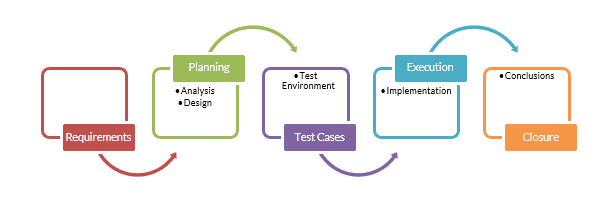
- Requirements
During the requirements phase, testing teams study and define the scope of testing, communicate the need for mitigation strategies where tests are not feasible, and prepare test plans.
- Planning
Test plans include identification of key metrics, as well as methodologies for measurement and tracking them. It involves the creation of test strategies and risk management and mitigation. The Analysis phase identifies test conditions depending on the degree of testing, complexity, risks, and exit criteria. The more detailed the test conditions, the better the test coverage and test results that can be obtained. The Design phase splits the test conditions into further detail, sets up testing environments, and creates traceability and coverage metrics.
- Test Cases
Based on Analysis and Design, detailed test cases are created and reviewed for accuracy and coverage. They are prioritized and segregated into automated/manual tests and test scripts are created.
- Execution
In the actual execution, the tests are conducted, defects are logged, and traceability metrics are monitored.
- Closure
In the Conclusion phase, exit criteria are checked and reports are generated. In the Closure phase, all tests are checked for completion, and reviews are conducted to record key learnings and opportunities for improvement.
While software development goes through its stages, so does the STLC. This generates a series of Test Artifacts, which are deliverables that are created before, during, and after the testing phases.
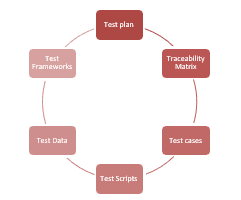
Common Test Artifacts generated during the STLC.
Summary
Software Testing is one of the most critical phases of the software development process. There are hundreds of types of testing, designed according to the specific applications being tested. The sign of good software testing is the extent of test coverage and the ability to detect errors and deficiencies. With the plethora of applications being developed and used globally, software testing is vital to ensure human safety, achieve high quality and cost-efficiency, and deliver customer satisfaction.
Looking to improve your software testing? Take a look at Zuci’s software testing services and see how you can leverage Zuci for your business needs.
Related Reads:
Related Posts




